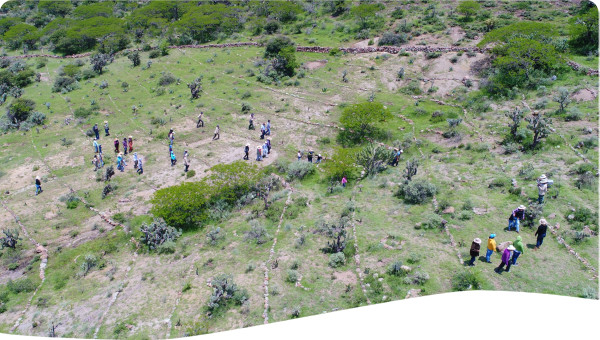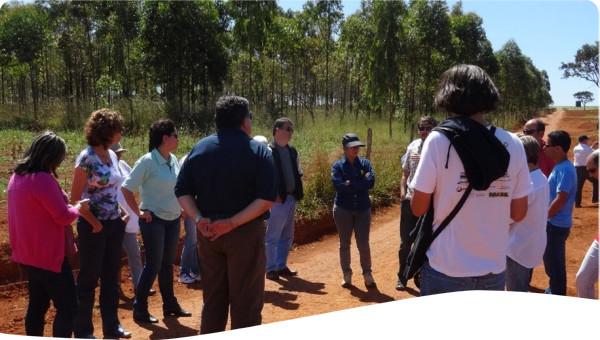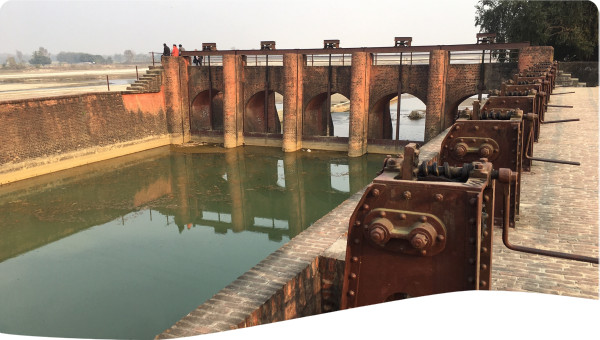As a new state since 2000, established to support the indigenous rights, Jharkhand is home to many of the country's poorest people, despite being located in one of the richest natural resource areas in India. Agriculture is the sole economic activity in this drought-prone area, but it's underdeveloped, with poor water facilities and lack of access to modern agriculture practices. Therefore, starvation and malnutrition of its citizens is widespread.
Agriculture is the sole economic activity of rural population of the area. Compared to the rapid industrial growth, agriculture has remained neglected in the state. The villagers depend on rain-fed mono crop. Much of the land is rocky and uncultivable. The reddish soil cannot retain moisture and is very difficult to plough and sow. The area is also drought prone and
marked by erratic rainfall. Hence the agricultural output is also very low and the stock of grains lasts only a few months. Rest of the year, the indigenous communities (tribal Adivasis) buy or borrow paddy at a high price. Most of them survive as migrant labours. This newly born state was curved out of the state of Bihar in the year 2000 with the sole purpose of ensuring development of the indigenous people. But in reality that did not happen.
The indigenous communities continue to live in abject poverty. They have been worst hit by the massive exploitation of the natural resources rampant in the state. Loss of land to the mines and industries has gone hand in hand with impoverishment, loss of identity and erosion of self-esteem. The rapid industrial growth has benefitted solely a very small section of the urban based educated immigrant population. Illiteracy and ignorance are the lifelong companions of the indigenous people. Thus they are reduced to the status of easily replaceable unskilled labourers. Starvation and malnutrition are widespread. Though the state was formed with great fan-fare the real challenges came in the forefront after the formation of the state. While the people of Jharkhand were primarily agriculturists, the support for agriculture was low, water facilities were poor, access to upgraded and modern agriculture-based knowledge was limited and the overall produce from the rugged land was very low.
Swadhina, a women's organization working for the rights of grass-root women for nearly three decades, identified three main issues of land and water governance, based on their practical, field-based experiences. The organization worked to resolve these issues by setting the following goals: ensuring water for irrigation purposes, cultivating land quality and the use of it, improving the role and position of women in the community. The process itself was established in a way that the positive actions towards one aspect would have beneficial impacts onto the other aspects. In order to improve land and agricultural conditions by increasing the water holding capacity of soil, many actions were taken including the construction of small irrigation channels, planting of various trees to prevent soil erosion, and encouraging water sharing within the community. Improving the quality of agriculture was made possible by transforming about 410 acres of non-arable land into arable land by introducing compost pits, crop-rotation strategies and use of non-hybrid vegetables to families. Women played an integral role in this project, assisting on the governing decisions regarding to land and water, and helping to execute the action plans. The process of empowerment was further ensured by giving them "Possession Certificates" in their name and providing Women's Groups trainings on agriculture, animal care and seed preservation. The Women's Groups later transformed into Women Farmer's Groups.
The recognition of the interconnection between water, land and the role of women as decision makers lead to:
improved living standards, especially for women;
increased consumption of milk and vegetables, as a result of animal and seed support programs;
environmentally-friendly agricultural practices;
an improved economic situation, as a result of increased access to land and water;
reduced migration of the rural population and of the overall burden on women;
improved Women’s political participation in local government system.
The role of CSOs/NGOs is vital for achieving development. Although in some situations, the availability of resources and policies related to them is not a problem, people are not always aware of their possibilities.
The involvement of women and their active participation in the local community helps to achieve effective land and water use.
The advocacy plays a crucial role in building a bridge between public and government representatives
 Case studies
Case studies

